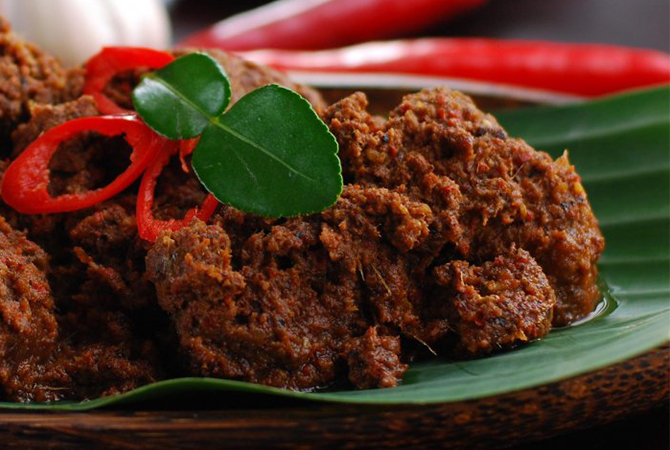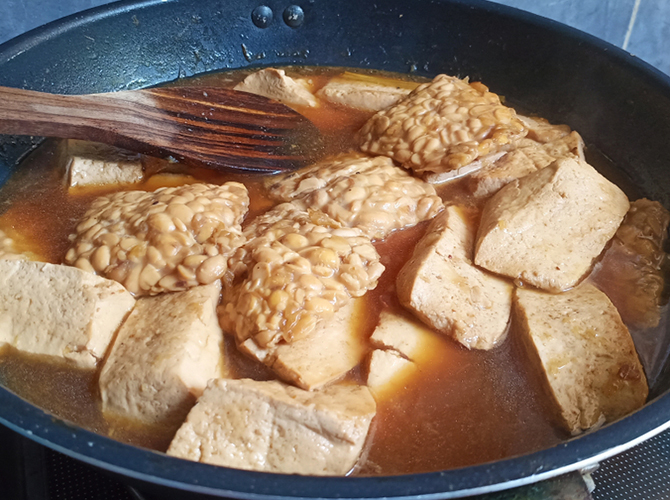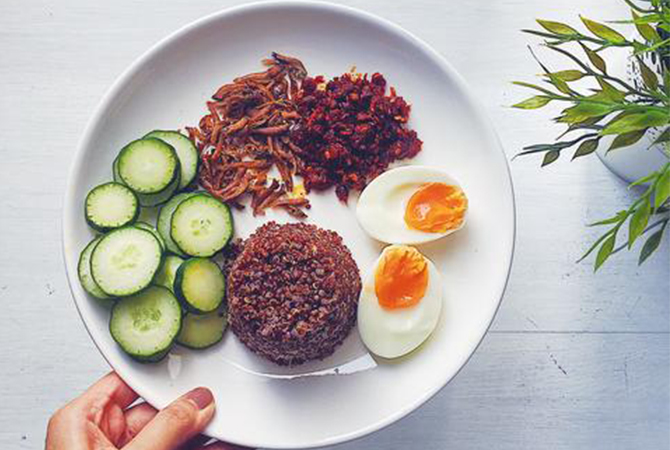Fasting month is over and Muslims in Malaysia, and abroad, are ready to celebrate Raya. For over 30 days, they have abstained from food and drink from sunrise to sunset. With the passing of the Holy Month of Ramadan comes the festive celebration. Open houses, colourful costumes, and delicious food—you name it! However, it’s no secret that classic Malay dishes can be a little on the unhealthy side (but oh-so-yummy). With society shifting to a more health-centric lifestyle, eating during Raya can be non-bloating too. These are some brilliant ways to prepare classic dishes without the high calorie count while ensuring that they still taste amazing.
Rendang

Calories the unhealthy way: Approx. 286 per 75 grams (beef), Approx. 350 per 200 grams (chicken)
No, not the crispy one you saw on the telly (although, if you’re interested, we do have that recipe here). Rendang is a dish that needs no introduction here in Malaysia. This is, after all, a hallmark of Southeast Asian cuisine. It’s warm, rich and bursting with spicy flavour, but it can be very unhealthy. Scrap that. Rendang isn’t, traditionally, for the health-conscious. Generally, to achieve the desired flavour and texture, an abundance of spices, meat, and coconut (simmered for hours) are utilised. Raya is one special occasion, and rendang is a classic staple.
Why is this classic Malay dish unhealthy? Well, it has saturated fat content (linked to heart disease) that is unfortunately high. Hence, that begs the question: how do you make the dish healthy? First of all, use lean meat to cut the fat content. If you intend to go further, try vegetarian protein, such as tempeh. Furthermore, opt to flavour the rendang with desiccated coconut instead of coconut milk. Last but not least, substitute frying with braising the meat and spices to reduce the use of oil. You will end up with a dish that’s 43 per cent lower in fat and 40 per cent lower in calories—say good bye to the original unhealthy rendang. This is the first step to a Raya where you won’t end up unhappily bloated.
READ MORE: Learn how you can weave a ketupat (without looking)
Terik Tauhu Tempeh

Calories the unhealthy way: Approx. 325 (serving for four)
While terik tauhu tempeh might seem healthy, you might not notice that the braised firm soya bean curd and fermented soya bean curd dish contains massive amounts of fat, including saturated fat—major contributors to high risk of heart disease and stroke. What changes can you make for a healthier terik tauhu tempeh?
Begin by cutting the amount of saturated fat by only using oil that’s high in unsaturated fat. This can include canola oil, olive oil, and sunflower oil—instead of butter or ghee. In addition, reduce the amount of oil absorbed by the ingredients by heating oil until it becomes hot before stir-frying. This will also shorten cooking time! If you are planning to include dairy in the dish, why not opt for low-fat products? Yes, it’s Raya and a time to celebrate with family and friends, but you would want the best for the ones you love too. Therefore, a healthier method to prepare the terik tauhu tempeh (a good source of protein) is exactly what’s needed.
READ MORE: What makes Malaysian Raya unique?
Nasi Lemak

Calories the unhealthy way: Approx. 400 per plate
Hold up! Any form of gagging isn’t surprising. Nasi lemak is the national dish of Malaysia and any type of reincarnation is generally frowned upon. This is a dish that connotes different images for every Malaysian. After all, everyone has their preferences, no? The truth is that nasi lemak isn’t very healthy. Yes, that’s a bummer! The good news is that there are ways to churn out a healthier version of the dish for Raya.
What comes to mind when you think of nasi lemak? Fragrant coconut-flavoured rice, sambal, ikan bilis, cucumbers, and boiled eggs. While that’s mouth-watering enough, you can actually substitute white rice (immensely refined and processed) with quinoa because it is high in protein as well as rich in minerals and fibre. As for sambal, use raw honey and olive oil instead of sugar and processed oil. A slight reminder though: don’t go hem on the raw honey, in spite of the vitamins and antioxidants. Last but not least, stop with the deep frying and bake the ikan bilis instead. Crunchy and healthy? Yes! This Raya, it is going to a fun and healthy celebration.
There are so many classic dishes to feast on during Raya, such as serunding, satay, lontong, lemang, soto ayam, and dodol. However, as wonderful and amazing they are to your tastebuds, the positivity doesn’t translate in the context of your health. Eating healthy doesn’t mean being restrictive, boring, and bland. The points above are prime examples. Don’t let the delicious and aromatic food tempt you. Ain’t nobody got time for that.
| SHARE THE STORY | |
| Explore More |




